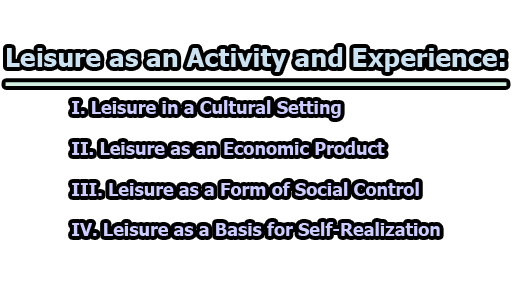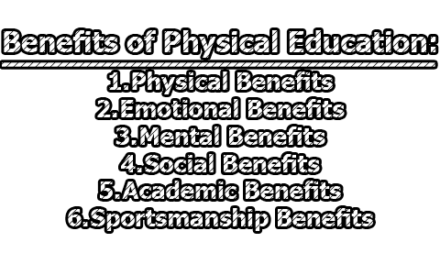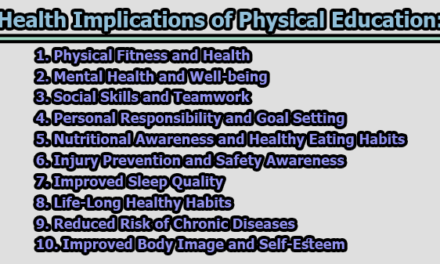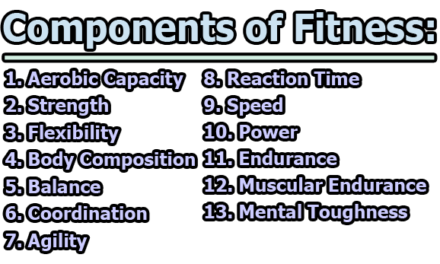Leisure as an Activity and Experience:
Leisure, often regarded as the pursuit of free time, plays a multifaceted role in society. It is not merely the absence of work but encompasses a wide range of activities and experiences that individuals engage in during their discretionary time. In this article, we will explore leisure as an activity and experience; in various cultural, economic, social, and personal contexts.
I. Leisure in a Cultural Setting: Leisure activities are deeply rooted in culture, reflecting the values, traditions, and history of a society. Culture shapes the types of leisure activities that are popular and the way people engage in them. Let’s explore how culture influences leisure:
1. Cultural Identity and Leisure: Every culture has its own unique leisure preferences and traditions that reflect its core values and beliefs. These leisure activities often serve as a means for individuals to connect with their cultural identity. Here are some examples:
- Japanese Tea Ceremony: The Japanese tea ceremony, known as “chanoyu” or “sado,” is a prime example of how leisure can be deeply ingrained in cultural identity. This ritualistic practice is not just about drinking tea; it is a profound cultural experience that emphasizes mindfulness, respect, and aesthetics. Participants engage in a meticulously choreographed ceremony that embodies Japanese ideals of harmony, purity, and tranquility. Through this leisure activity, individuals connect with Japan’s cultural heritage and philosophical principles.
- Chinese Calligraphy: In Chinese culture, calligraphy is not only a form of artistic expression but also a leisure activity that reflects the importance of tradition, discipline, and mastery. Writing characters with a brush and ink is seen as a way to connect with the rich cultural history of China and convey profound meanings through artistic strokes.
- Argentinian Tango: Tango is not just a dance; it’s a cultural expression deeply ingrained in the identity of Argentina. Dancing tango is not only a leisure activity but also a way for Argentinians to connect with their passion for music, romance, and their country’s history.
- Indian Classical Music: Classical music in India, with its rich tradition of ragas and intricate rhythms, is not just an auditory delight but a leisure activity that showcases the country’s cultural reverence for melody, spirituality, and devotion.
2. Festivals and Celebrations: Cultural festivals and celebrations are vibrant expressions of a community’s shared identity and values. These events not only provide leisure but also foster a sense of cultural belonging and unity. Here are some examples:
- Carnival in Brazil: Carnival is one of Brazil’s most iconic cultural celebrations. It is a time when people come together to revel in music, dance, and elaborate parades. This festive leisure activity is deeply rooted in Brazilian culture, showcasing the country’s love for music, rhythm, and vibrant costumes. Carnival represents a break from the routine of daily life and serves as a cultural statement of joy and inclusivity.
- Diwali in India: Diwali, the Festival of Lights, is a significant cultural and religious celebration in India. It involves lighting lamps, exchanging gifts, and feasting on traditional foods. Beyond its religious significance, Diwali is a leisure activity that strengthens family bonds and reinforces cultural values of light triumphing over darkness and good over evil.
- Oktoberfest in Germany: Oktoberfest is not just a beer festival; it’s a cultural celebration of Bavarian traditions, including music, folk dances, and traditional clothing. It offers both locals and tourists a leisurely immersion into German culture.
- Songkran in Thailand: Songkran, the Thai New Year celebration, is known for its water festival. Beyond being a leisurely water fight, it symbolizes cleansing and renewal, reflecting the Thai cultural values of respect for tradition and the importance of family bonds.
3. Cultural Heritage Preservation: Museums, art galleries, historical sites, and cultural institutions play a crucial role in preserving a society’s cultural heritage. These spaces not only provide leisure opportunities but also serve as tools for educating and connecting individuals with their cultural history. Here’s how cultural heritage preservation intersects with leisure:
- Louvre Museum, France: The Louvre Museum in Paris is not just a repository of art and historical artifacts; it’s also a leisure destination where visitors can immerse themselves in the world’s cultural treasures. By exploring the Louvre, individuals can connect with the rich artistic heritage of France and the broader global history of art.
- Angkor Wat, Cambodia: Angkor Wat, a UNESCO World Heritage Site, is a symbol of Cambodia’s cultural and architectural legacy. It attracts tourists and history enthusiasts who seek both leisure and a deeper understanding of the Khmer civilization that built this remarkable temple complex. Visitors engage in leisurely exploration while contributing to the preservation of this cultural treasure.
- Acropolis Museum, Greece: The Acropolis Museum in Athens serves as both a cultural and leisure destination. Visitors can explore the rich history of ancient Greece while appreciating the significance of the Parthenon sculptures and other artifacts in Greek cultural heritage.
- Machu Picchu, Peru: This ancient Incan citadel not only attracts tourists for its breathtaking beauty but also offers a leisurely journey into the cultural history of the Inca civilization, showcasing their architectural and engineering achievements.
4. Leisure and Tourism: Tourism often revolves around the desire to experience different cultures, including their leisure activities. Travelers seek to immerse themselves in new ways of life and engage in activities that may be foreign to their own culture. Here’s how leisure and tourism intersect:
- Japanese Onsen Experience: Many tourists visit Japan to enjoy traditional hot spring baths known as “onsen.” This leisure activity allows visitors to relax and rejuvenate in a uniquely Japanese way while also experiencing the country’s cultural emphasis on communal bathing and relaxation.
- Thai Cooking Classes: Thailand is renowned for its cuisine, and many tourists take part in Thai cooking classes. These classes provide both leisure and cultural immersion as participants learn to prepare authentic Thai dishes, gaining insight into the country’s culinary traditions.
- Italian Cooking Classes: Italy is famous for its culinary traditions, and tourists often participate in cooking classes to learn how to make authentic Italian pasta and pizza. These classes offer a hands-on cultural experience.
- Mardi Gras in New Orleans, USA: Mardi Gras celebrations in New Orleans are a unique leisure and cultural phenomenon. Tourists flock to the city to experience the vibrant parades, music, and culinary delights that showcase the distinct culture of New Orleans.
II. Leisure as an Economic Product: In today’s globalized world, leisure has become a significant economic product. It encompasses a wide range of industries that generate revenue and employment opportunities. Let’s delve into the economic aspect of leisure:
1. The Entertainment Industry: The entertainment industry is a juggernaut within the leisure economy, encompassing various sectors, including film, music, sports, and live performances. These industries thrive on leisure pursuits and play a pivotal role in driving economic growth and job creation:
- Film Industry: Hollywood and other global film hubs generate billions of dollars annually through the production, distribution, and exhibition of movies. Box office revenue, streaming services, merchandise sales, and licensing agreements all contribute to the economic vitality of the film industry. Moreover, filmmaking creates employment opportunities not only for actors and directors but also for a vast array of professionals, from technicians to marketing experts.
- Music Industry: The music industry is another vital component of the leisure economy. Musicians, record labels, streaming platforms, and concert promoters all benefit from the consumption of music as a leisure activity. Live concerts and music festivals, in particular, draw enormous crowds, stimulating local economies and tourism.
- Sports Industry: Sports are a global phenomenon with immense economic significance. Professional sports leagues, teams, and events like the Olympics attract substantial investments and sponsorships. Sports merchandise, broadcasting rights, and ticket sales generate substantial revenue. Furthermore, the sports industry fuels ancillary businesses, including sports apparel, equipment, and fitness facilities.
2. Hospitality and Tourism: Leisure travelers are the lifeblood of the hospitality and tourism sectors. These industries encompass hotels, restaurants, airlines, and tour operators, contributing significantly to the global economy:
- Hotels and Accommodations: The hospitality industry provides a wide range of lodging options, from luxury resorts to budget-friendly motels. Travelers’ choices depend on their leisure preferences and budgets. The industry also creates jobs for hotel staff, from front-desk personnel to housekeeping and catering.
- Restaurants and Food Services: Dining out is a quintessential leisure activity, and the restaurant industry caters to a diverse range of culinary tastes and preferences. Restaurants, cafes, and food trucks generate revenue while employing chefs, waitstaff, and culinary experts.
- Airlines and Transportation: The travel industry, including airlines, cruise companies, and car rental services, enables people to embark on leisure trips. Airlines alone contribute substantially to the global economy, connecting people across the world and supporting countless jobs in aviation, maintenance, and customer service.
- Tourism and Travel Agencies: Travel agencies and tour operators design and facilitate leisure experiences for tourists. They create packages that include accommodations, excursions, and guided tours, stimulating local economies at tourist destinations.
3. Leisure Technology: Advancements in technology have given rise to a burgeoning market of leisure-related products and experiences. From video games to virtual reality, leisure technology has become a significant economic driver:
- Video Game Industry: Video games have evolved into a massive entertainment industry, offering a diverse range of experiences from console gaming to mobile apps. This sector not only generates revenue through game sales but also fosters an ecosystem of esports, streaming, and merchandise.
- Virtual Reality (VR) and Augmented Reality (AR): The development of VR and AR technologies has opened new frontiers in leisure. From immersive gaming experiences to virtual tourism, these technologies have spawned a growing market with applications in entertainment, education, and training.
4. Leisure and Retail: Shopping has transformed from a utilitarian task to a leisure activity in its own right. Malls and shopping centers have adapted to provide comprehensive leisure experiences:
- Malls and Shopping Centers: Modern malls are designed to be more than just shopping destinations. They offer a wide array of leisure amenities, including movie theaters, restaurants, arcades, and even indoor theme parks. These leisure offerings not only attract shoppers but also create a sense of community and social engagement.
- E-commerce: The digital realm has also reshaped the retail landscape. Online shopping, driven by leisurely browsing and convenience, has given rise to e-commerce giants like Amazon. The e-commerce sector encompasses everything from clothing to electronics, creating new economic opportunities in logistics, online marketing, and technology.
III. Leisure as a Form of Social Control: While leisure is often associated with personal freedom and relaxation, it can also serve as a means of social control. Governments, institutions, and corporations can influence and manipulate leisure activities to achieve specific social or political objectives:
1. Media and Propaganda: Media and advertising are powerful vehicles for shaping public opinion and behaviors. They often promote certain leisure activities or lifestyles that align with the interests of corporations or governments. Here’s how leisure is used as a form of social control in this context:
- Consumerism and Materialism: Advertising campaigns frequently encourage consumption as a form of leisure. They promote the idea that buying products and services is not just a means of fulfilling needs but a way to enhance one’s leisure and social status. This consumerist narrative can lead to overconsumption and debt, effectively controlling individuals through their pursuit of leisure-related goods.
- Idealized Lifestyles: Media, including magazines, TV shows, and social media influencers, often portray idealized leisure lifestyles. These images of luxury vacations, high-end dining, and extravagant leisure activities can create aspirations and social pressures, shaping people’s leisure choices and spending patterns.
- Normalization of Behaviors: Media can normalize certain behaviors through the depiction of leisure activities. For instance, if a TV series portrays excessive drinking or risky behaviors as part of leisure, it can influence viewers to perceive such activities as socially acceptable, potentially leading to negative consequences.
2. Censorship and Control: Some governments exercise control over leisure activities by restricting access or censoring content they deem undesirable. This can limit individual freedom and influence cultural norms:
- Censorship of Leisure Content: In certain countries, governments censor or ban leisure content, such as films, books, or websites, that they consider subversive or offensive. This control over leisure media can limit exposure to diverse ideas and worldviews, reinforcing government-approved narratives.
- Restrictions on Leisure Activities: Governments may place restrictions on specific leisure activities, particularly those perceived as contrary to cultural or religious values. For example, some countries impose strict regulations on alcohol consumption or the operation of entertainment venues.
- Control of Information: Governments may control information related to leisure events, such as protests or political gatherings, to suppress dissent. By limiting access to information about leisure activities, they aim to maintain social stability and control.
3. Social Engineering: Public policies and urban planning can be used to influence the availability and accessibility of leisure spaces and activities. Here’s how social engineering is employed as a form of social control:
- Urban Planning: The design of public spaces, including parks, recreation areas, and transportation systems, can influence how people engage in leisure. For example, urban planners may prioritize the development of shopping centers over public parks, shaping leisure choices and consumer behaviors.
- Zoning Laws: Zoning laws can dictate the types of leisure establishments permitted in specific areas. These laws can influence the distribution of leisure opportunities and the demographics of neighborhoods.
- Promotion of State-Sanctioned Leisure: Governments may actively promote certain forms of leisure that align with their political or cultural agenda. This can include the sponsorship of national sports events or cultural festivals that reinforce the state’s values and identity.
4. Leisure and Social Cohesion: Leisure activities can be harnessed to promote social cohesion and integration within a society. Community events and leisure-focused initiatives can bring people together, fostering a sense of belonging and shared identity:
- Community Events: Local governments and community organizations often organize events and festivals that encourage social interaction. These events can create bonds among participants and strengthen community ties.
- Sports and Recreation Clubs: Participation in sports and recreational clubs can enhance social cohesion by providing individuals with a sense of belonging to a group. Team sports, in particular, promote cooperation and teamwork.
- Public Spaces: The design and maintenance of public spaces, such as community centers and libraries, can facilitate social interaction and the exchange of ideas. These spaces are vital for promoting a sense of community.
IV. Leisure as a Basis for Self-Realization: Leisure is not just about external experiences; it also plays a crucial role in personal development and self-realization. Here, we explore how leisure contributes to individual growth and well-being:
1. Personal Interests and Hobbies: Leisure offers individuals the freedom and time to pursue their passions and interests beyond the confines of their professional lives. Engaging in hobbies and personal interests is fundamental to self-expression and creativity:
- Creative Outlets: Hobbies such as painting, drawing, writing, or playing a musical instrument provide an avenue for self-expression and creativity. They allow individuals to explore their artistic inclinations and develop their unique voices.
- Passion Pursuit: Engaging in activities one is passionate about, whether it’s gardening, woodworking, or cooking, fosters a deep sense of fulfillment. These pursuits allow individuals to connect with their inner desires and interests.
- Life Enrichment: Hobbies often extend beyond the immediate activity. For example, gardening not only offers the pleasure of tending to plants but also fosters a sense of connection to nature and the satisfaction of seeing growth and beauty unfold.
2. Stress Reduction and Mental Health: Leisure activities have a profound impact on mental health and well-being, providing respite from the stresses of daily life and promoting emotional equilibrium:
- Stress Reduction: Engaging in leisure can serve as a buffer against stress. Activities like meditation, yoga, or simply spending time in nature help individuals relax and reduce anxiety.
- Emotional Well-being: Leisure provides opportunities for emotional rejuvenation and self-reflection. It allows individuals to disconnect from the demands of work and responsibilities, fostering a sense of tranquility and happiness.
- Coping Mechanism: Leisure activities can serve as coping mechanisms during challenging times. Engaging in hobbies or leisure pursuits provides a positive outlet for managing difficult emotions and improving mental resilience.
3. Learning and Skill Development: Leisure activities often involve the acquisition of new skills and knowledge, contributing to personal growth and self-esteem:
- Skill Acquisition: Leisure activities such as cooking, photography, or learning a new language offer opportunities for skill development. Gaining proficiency in these areas fosters a sense of accomplishment and self-worth.
- Continuous Learning: Leisure encourages a culture of lifelong learning. Whether it’s reading, attending workshops, or taking up a new sport, individuals engage in intellectual and physical pursuits that challenge them to grow and adapt.
- Boosting Self-Esteem: Mastery of a skill or the achievement of a personal goal in a leisure activity enhances self-esteem. This sense of accomplishment transcends the activity itself and spills over into other aspects of life.
4. Physical Health and Well-being: Physical activities and sports are integral components of leisure that contribute significantly to overall health and well-being:
- Physical Fitness: Engaging in regular physical activity through leisure pursuits helps maintain physical fitness and health. It reduces the risk of chronic diseases, promotes cardiovascular health, and supports weight management.
- Mental Health Benefits: Physical activity has a positive impact on mental health, reducing symptoms of depression and anxiety. Activities like jogging, swimming, or yoga release endorphins, promoting a sense of well-being.
- Social Connection: Many leisure activities involve social interaction, fostering connections with others who share similar interests. These social connections contribute to emotional well-being and a sense of belonging.
In conclusion, Leisure is a multifaceted phenomenon that transcends mere relaxation and free time. It is deeply intertwined with culture, economics, social dynamics, and personal development. Understanding the various dimensions of leisure is essential for comprehending its role in contemporary society. Whether as a cultural expression, economic driver, form of social control, or a pathway to self-realization, leisure continues to shape our lives in profound ways. It is a reflection of who we are, what we value, and how we aspire to live our lives, making it a rich and endlessly fascinating subject of study and exploration.
References:
- Aitchison, C., & MacLeod, N. (2015). Leisure and tourism landscapes: Social and cultural geographies. Routledge.
- Crompton, R. (1979). Motivations for pleasure vacation. Annals of Tourism Research, 6(4), 408-424.
- Iso-Ahola, S. E., & Crowley, E. D. (1991). Toward a theory of leisure boredom. Annals of Tourism Research, 18(3), 419-431.
- Jackson, E. L., & Burton, T. L. (1999). Leisure as a coping resource: Variations in coping with traumatic injury and illness. Leisure Sciences, 21(1), 15-31.
- Kuykendall, L., Tay, L., & Ng, V. (2015). Leisure engagement and subjective well-being: A meta-analysis. Psychological Bulletin, 141(2), 364-403.
- Neulinger, J. (1981). To leisure: An introduction. Allyn & Bacon.
- Rojek, C. (2005). Decentring leisure: Rethinking leisure theory. Sage.
- Stebbins, R. A. (2007). Serious leisure: A perspective for our time. Transaction Publishers.
- Veal, A. J. (2006). Research methods for leisure and tourism: A practical guide. Pearson Education.
- Wheaton, B. (2007). Consumption and lifestyles. In A. A. Lew, C. M. Hall, & A. M. Williams (Eds.), A companion to tourism (pp. 386-402). Blackwell.

Former Student at Rajshahi University










